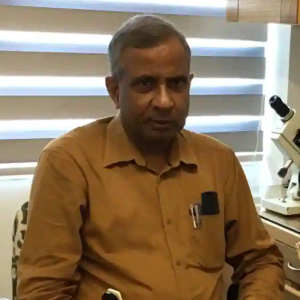Keratoprosthesis: Should one opt for an artificial corneal transplant?
Cornea is the outer most transparent layer of the eye that appears black or brown due to the colour of the Iris behind it and can be transplanted from a dead person to that of a living host.
Read moreHow to get rid of your glasses: Lasik surgery is the way to go
Wearing glasses is not exactly everyone’s choice. Out of sheer self-consciousness for one’s looks or even discomfort, perhaps more people would like to avoid wearing them than those who would willingly wear the so-called ‘contraption’. In other words, for many, wearing glasses is not cool.
Read moreCataract: The Biggest Cause of Blindness in India
In a country which has the unenviable record of having the largest number of blind people in the world, Cataract has often been cited as being most responsible for this life-crippling ocular condition. With estimates attributing 50 to 80 percent of the bilateral blindness cases in India to cataract, this must be treated as a matter of utmost and even exigent concern.
Read moreWho is Afraid of Squint
Normally, both of our eyes are aligned parallel in all directions of movement with the help of six muscles attached to the outside of each eye. To focus the eyes on the same spot, all the muscles in each eye must be balanced and working together in a coordinated manner.
Read moreDry Eyes
Defining Dry Eyes
When there is a constant lack of lubrication and moisture on the surface of our eyes and they do not produce an adequate amount of tears, it results in an eye condition commonly known as Dry Eyes.
Keratoconus - Diagnosis & Treatment
What is Keratoconus?
When the cornea (the transparent layer that forms the frontal dome-shaped portion of the eye) becomes thin and bulges outward forming a cone, the result is an eye condition called Keratoconus.
Read moreGlaucoma: The sneak thief of the Eye
Glaucoma is basically a disease which involves damage to the optic nerve of the eye causing permanent blindness due to rise in pressure within the eye. The rise in pressure is gradual and the damage is slow. As a result there are hardly any symptoms like pain or redness and the patients mainly present when half of their vision is lost and therefore glaucoma is called as the sneak thief of the eye!
Read moreComputer Vision Syndrome
Computer vision syndrome is also known as Digital eye strain which results because of prolonged use of computers, laptops, mobile phones and I pads. In today’s scenario, we cannot imagine our lives without these digital devices, however their prolonged use is associated with lots of problems.
Read moreAir Pollution and The Eye
Currently Delhi NCR and many parts of northern India are experiencing very bad air quality due to severe air pollution. The AQI ( PM 2.5 AQI and PM 10 AQI)at many places in these regions is as high as 600 or even more. Severe air pollution leads to formation of dense smog in the lower strata of atmosphere which is actually a mixture of pollutant gases, smoke and fog. It not only leads to poor visibility in these areas, low penetration of sunlight but also causes many disease mainly respiratory illnesses.
Read moreSigns that your Child may need Glasses
Why is it Important to keep your Child’s Vision in Check?
Till the ages of seven or eight, a child’s vision is still in the developing stage. If your child has some kind of a vision problem during this process of development, it is preferred to get your child’s eye checked.
Babies and Children get Cataract too!
Cataracts by popular understanding are the prerogative of the old. However, Cataracts are quite common in infants and children as well, except that the causes are different and it is even more critical for surgery to be performed early! The various causes of Cataracts at birth include hereditary causes, part of Genetic Syndromes, intrauterine infections like Rubella and birth trauma. They are also caused due to nutritional deficiencies in the mother during pregnancy.
Read moreThe Human Eye: Myths & Facts
Age-Old Myths
Whether it is about how eating carrots benefits vision or that sitting too close to the television set spoils the eyes, each one of us has heard innumerable “facts” about the human eye. But have you ever stopped to wonder whether there are myths or are actually facts?
To help you separate fact from fiction, here is a list of some interesting myths and facts about our eyes.
Read moreDiplopia(Double Vision)
What is Diplopia (Double Vision)?
Double Vision (Diplopia), much like the name suggests, is when you see double or two images instead of one.
There are two types of double vision - Monocular and Binocular. Monocular double vision affects one eye and Binocular double vision affects both your eyes. At times, double vision can be temporary.
All about Vitrectomy Surgery
What is Vitrectomy?
Vitrectomy is a surgical procedure that is done to remove and replace either some or all of the vitreous humour (a gel-like, transparent substance that fills the eyeball behind the lens).
Childhood Cataract
Describing a Cataract
The transparent structure located behind the pupil of the eye is the lens. When a cataract affects the eye, it clouds the lens and makes it less transparent.
A cataract prevents light rays from passing through the lens and focusing itself on the retina (tissue at the back of the eye).
A Unilateral Cataract is when one eye gets affected and Bilateral Cataract shows its effect on both the eyes.


